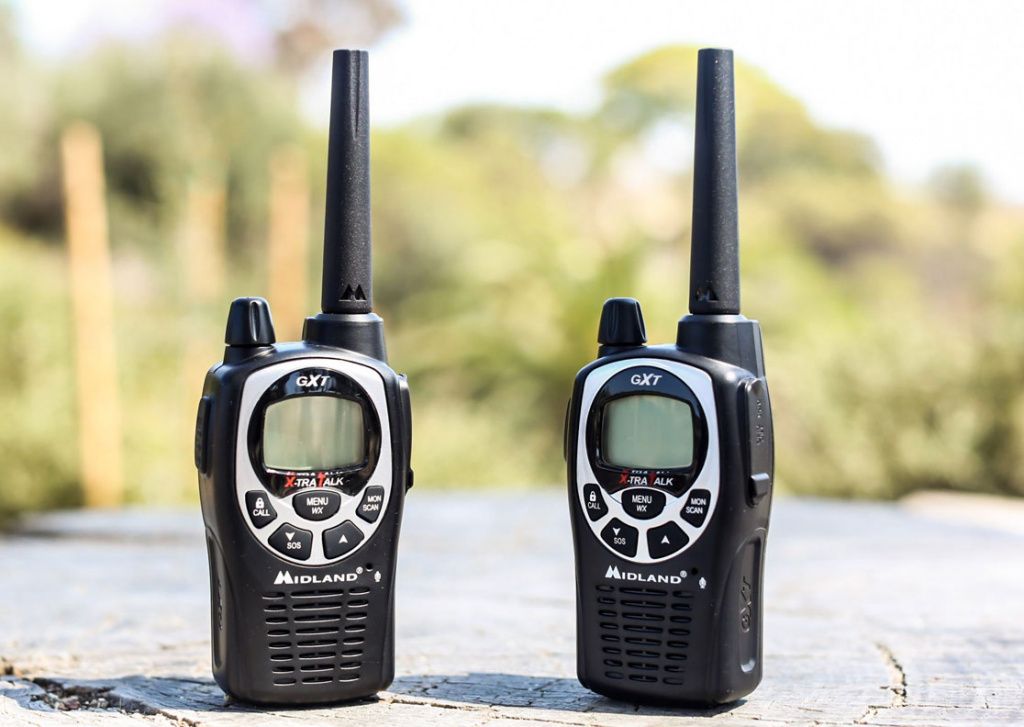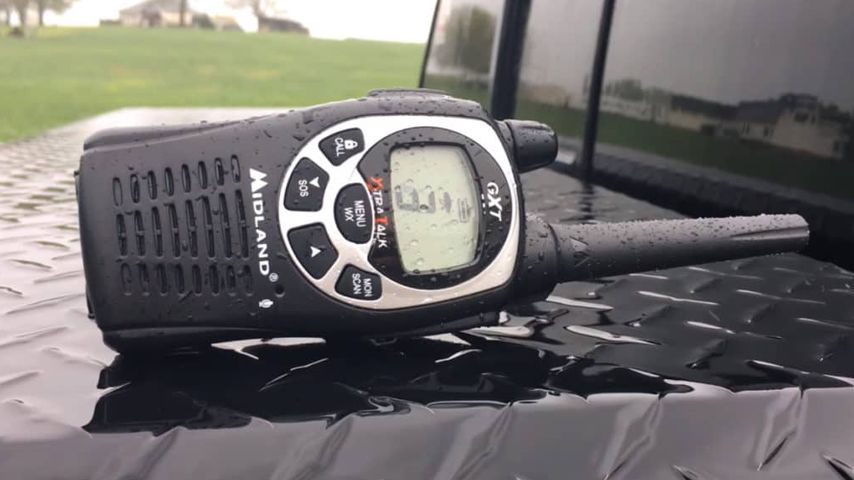How to Choose an ATV Walkie-talkie
You've got a cellphone and hand signals, what more do you need? A walkie-talkie. Hand signals serve you well quickly and when you need to communicate with anyone you see. A cellphone is best when you're off the ATV or calling for help. But when you can't see or hear a riding buddy or you want to help another rider in trouble, nothing else can do what a walkie-talkie can do. You need all three. This post will tell you how to choose a walkie-talkie for ATV use.
What are The Benefits of Having a Walkie-talkie on Board?

Riders are supposed to keep the members of their group in sight at all times, but if you've already been out on the trail, you know it's impossible to do that 100% of the time. Maybe you've rounded a corner and it's taking longer than expected for someone to show up behind you or you're climbing peaks and you have to wait.
Even when the whole group is in view, you may need to communicate something you can't say with hand signals. For instance, one of you may see a hazard no one else has seen yet.
You may see a hazard when you're out of sight of your partner or group.
If someone's in trouble, you can communicate with them if you're separated or in ways hand signals can't help with.
Being able to hold light, non-distracting conversations while on the trail can also enhance your experience. You can share a beautiful view together or laugh about something together.
You also won't have your cellphone at the ready on the trail and you can't wait for someone to pick up. You need communication to be more instantaneous.
Main Types of ATV Walkie-talkie

FRS radio
The most common type of walkie-talkie for ATV use is an FRS radio. FRS stands for Family Radio Station. These radios have 2 watts of power and operate at a frequency between 462MHz and 467MHz.
Anybody with an FRS radio can transmit on the channel at any time, without a license or training.
They don't have a great deal of power, but it should be sufficient for your needs. You shouldn't be that far apart.
The greater issue is that because these radios are so common, you may have a lot of traffic on the frequency if you're riding in a popular area. You can make this less of a problem by utilizing privacy codes.
GMRS
A GMRS radio is more powerful than an FRS model, offering 5 watts of power, but you have to have a license from the FCC to use it. Thankfully, the license process is easy and you won't have to do it again for 10 years.
HAM Radios
You can get radio models that are more powerful than either the FRS or GMRS, but they require a HAM radio license and that you follow all laws and regulations regarding their use.
What Features Do I Need to Look for When Choosing an ATV Walkie-talkie?

Ruggedness
For outdoor adventures, you need the toughest walkie-talkie you can get.
It needs to be waterproof. Water-resistant is better than just an average walkie-talkie, but one with an IP rating from the International Electrotechnical Commission are the best. If at all possible, invest in one with an IP rating. The higher the second number of the IP rating, the more waterproof your radio is.
Look for walkie-talkies with thick, simpler bodies and check the reviews to determine how likely it is to survive drops, crushes, and being jostled around.
Range
Determine your range requirements by how and where you ride. Are you likely to need to communicate with someone only within a few miles? If so, an FRS radio will serve you fine. If you can easily imagine or know you'll need more range than that, you probably need a GMRS radio.
Antenna
You can get the most bang for your buck and radio capabilities by choosing a radio with a longer antenna, the longer the antenna, the better the signal.
Channels and privacy codes
Radios will come with a range of channels and privacy code options. How much you need this depends on where you typically ride.
If you use popular trails or vary your riding locations enough that you don't know whether you'll encounter a lot of radio traffic, you'll have a greater need for many radio frequencies and privacy codes. Some models offer scanning so you can hear multiple channels at once.
If you pretty exclusively tackle trails without a lot of competition for frequencies, you can do well with a simpler model.
Battery
There are multiple things you should consider about the battery.
The first is battery life. The longer, the better.
You can also choose between chargeable batteries that you plug in, ones that require you to purchase AA or AAA batteries, and some that offer you the ability to do both.
Regardless of which option you choose, you need to plan what you will do on longer trips. Will there be somewhere to plug in your walkie-talkie? Are you bringing batteries?
VOX
VOX transmits whenever you talk so you don't have take time or effort to press a button. This can be more distracting actually. You may do better with a model with an easily accessible PTT button.
Ease of use
Before you buy the radio, imagine using it. Are the features too complicated and you think you'll get confused? Is something about its design going to be awkward for you? You need a walkie-talkie that will be pretty effortless to use.







































